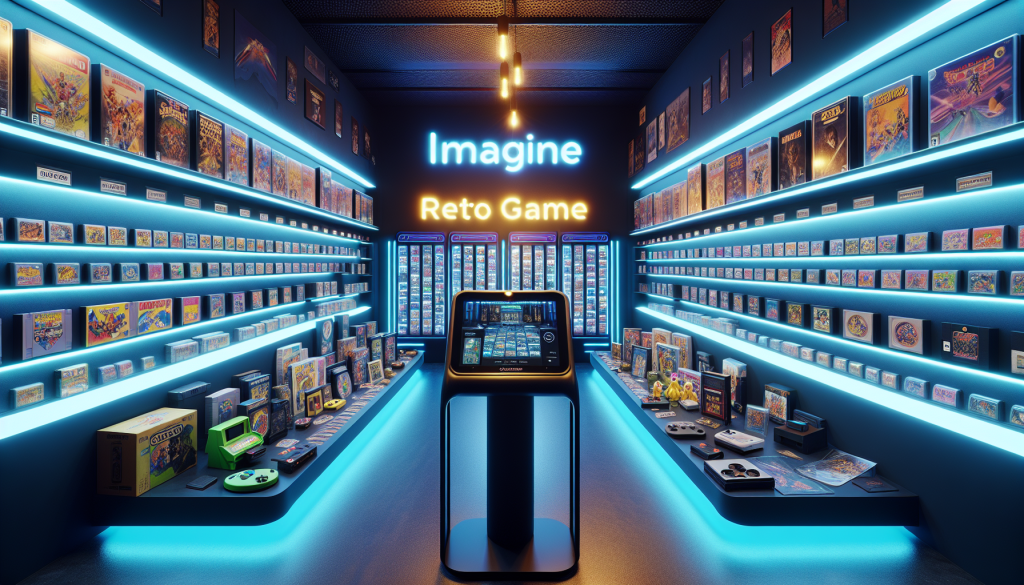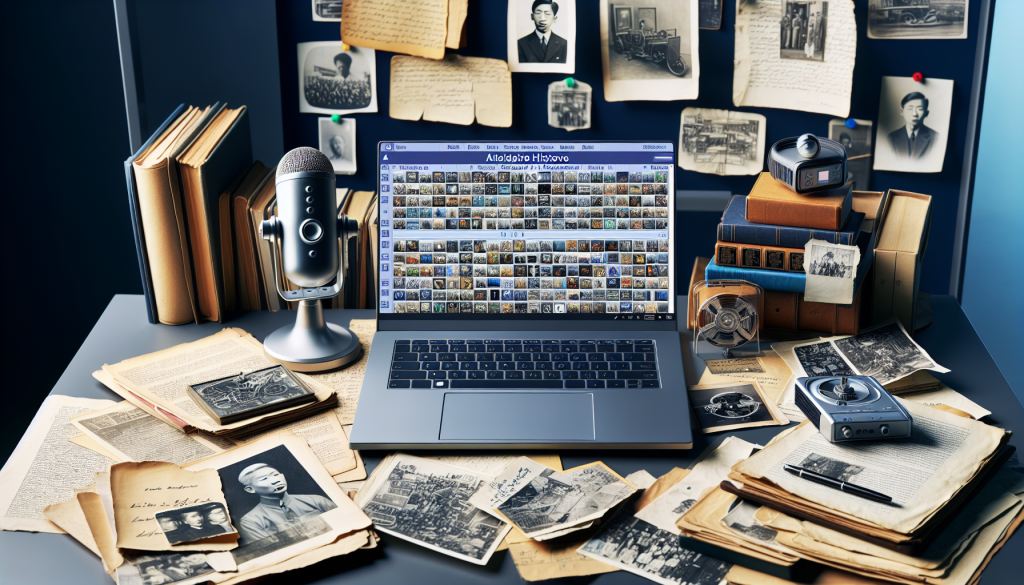Choosing the Right Venue and Equipment
Welcome to the wonderful world of retro gaming tournaments! If you’re a fan of classic video games and want to organize an epic gaming event, you’ve come to the right place. In this article, we’ll cover the first step in planning a successful retro gaming tournament: choosing the right venue and equipment.
1. Find the Perfect Venue
When it comes to hosting a retro gaming tournament, the venue is everything. You want a space that can accommodate your participants comfortably and create an atmosphere of excitement and nostalgia. Here are a few factors to consider when choosing the perfect venue:
- Size: Make sure the venue is spacious enough to accommodate all the gamers, spectators, and equipment. You don’t want people bumping into each other or feeling cramped during intense gaming sessions.
- Location: Look for a venue that is easily accessible for both local and out-of-town participants. Consider proximity to public transportation, parking availability, and nearby amenities like restaurants and hotels.
- Power and Internet Connectivity: Retro gaming tournaments require a reliable power supply for all the gaming consoles and equipment. Additionally, internet connectivity may be necessary if you plan to stream the event online.
- Ambiance: Create a retro gaming atmosphere by choosing a venue with a cool vibe. Look for venues with a vintage-inspired decor or consider decorating the space yourself with posters and memorabilia from classic games.
2. Gather the Essential Equipment
Now that you’ve found the perfect venue, it’s time to gather all the essential equipment for your retro gaming tournament. Here’s a checklist to ensure you have everything you need:
- Gaming Consoles: Depending on the games you plan to include, you’ll need a variety of gaming consoles such as the Nintendo Entertainment System (NES), Super Nintendo (SNES), Sega Genesis, and more. Make sure you have enough consoles to accommodate all the participants.
- Controllers: Don’t forget to provide a sufficient number of controllers for each gaming console. It’s a good idea to have a mix of original controllers and replicas to cater to different player preferences.
- Monitors or TVs: High-quality monitors or widescreen TVs are essential for providing a great gaming experience. Opt for low-latency displays with good refresh rates to minimize input lag.
- Games: Stock up on a wide selection of retro games to cater to different tastes. Consider classics like Super Mario Bros., Sonic the Hedgehog, Street Fighter, and The Legend of Zelda.
- Accessories: Don’t forget the accessories! Make sure you have enough power cables, AV cables, and adapters for all the gaming consoles. It’s also a good idea to have extra batteries for wireless controllers.
Remember, investing in high-quality equipment will greatly enhance the gaming experience for your participants and contribute to the overall success of your tournament.
Now that you know how to choose the right venue and gather the essential equipment, you’re well on your way to planning an epic retro gaming tournament. Stay tuned for the next steps in our series, where we’ll cover how to plan the tournament schedule and format.
Planning the Tournament Schedule and Format
So, you’ve chosen the perfect venue for your retro gaming tournament, and you’ve got all the necessary equipment ready to go. Now, it’s time to dive into the exciting task of planning the tournament schedule and format. This is where the real fun begins!
1. Determine the Length of the Tournament:
First things first, you need to decide how long your tournament will last. Consider the number of participants, the number of games you want to include, and the overall time you have available. A one-day tournament can be intense and action-packed, while a multi-day event allows for a more relaxed and immersive experience.
2. Choose the Tournament Format:
There are various tournament formats to choose from, and each has its own advantages and challenges. Here are a few popular options:
- Single Elimination: In this format, players compete head-to-head, and the loser is eliminated from the tournament. This format is straightforward and can be completed in a shorter time frame.
- Double Elimination: Similar to single elimination, but players have a second chance if they lose once. This format provides a fairer chance for all participants and allows for more gameplay.
- Round Robin: Each player competes against every other player in the tournament. This format ensures that everyone gets to play multiple games and minimizes the impact of luck.
3. Create a Balanced Game Schedule:
Once you’ve chosen the format, it’s time to create a game schedule that ensures fairness and excitement. Consider factors such as player skill levels, game difficulty, and the need for breaks. Aim for a balance between challenging matchups and more relaxed games to keep participants engaged throughout the tournament.
4. Allow for Warm-Up and Practice Sessions:
To ensure that participants have the best possible experience, provide opportunities for warm-up and practice sessions before the official tournament begins. This allows players to get familiar with the gaming setup, test their skills, and shake off any nerves.
5. Determine Time Limits for Each Game:
To keep the tournament running smoothly, it’s important to set time limits for each game. This ensures that matches don’t drag on for too long and helps maintain the overall schedule. Be sure to communicate these time limits to the participants in advance so they can plan their strategies accordingly.
6. Include Breaks and Rest Periods:
Even the most passionate retro gamers need breaks! Plan regular rest periods between matches to give participants a chance to relax, refuel, and recharge. This will help maintain energy levels and prevent burnout throughout the tournament.
7. Prepare Tiebreaker Rules:
In case of ties or draw games, it’s essential to have clear tiebreaker rules in place. This could involve additional rounds, sudden-death matches, or other predetermined criteria. Make sure all participants are aware of these rules to avoid any confusion or disputes.
With careful planning and a well-thought-out schedule, your retro gaming tournament is bound to be a hit. Remember to keep the participants’ experience at the forefront of your mind and strive to create a fun and memorable event. Good luck, and may the best retro gamer win!
Planning the Retro Gaming Tournament
So, you’ve decided to organize a retro gaming tournament, and you want it to be a roaring success. Well, you’ve come to the right place! In this section, we’ll dive into the exciting world of planning a tournament that will have gamers buzzing with anticipation. Let’s get started!
1. Determine the Games and Categories:
The first step in planning your retro gaming tournament is to decide which games you want to include. Choose a mix of popular classics like Super Mario Bros., Pac-Man, and Street Fighter, as well as lesser-known gems from different consoles and eras. Consider offering various categories, such as speed runs, high scores, or multiplayer battles, to cater to a diverse range of gaming enthusiasts.
2. Set a Date and Find the Perfect Venue:
Selecting the right date is crucial to ensure maximum participation. Avoid scheduling your tournament during major holidays, school breaks, or other big gaming events. Once you have the date nailed down, it’s time to find the perfect venue. Look for a spacious location with enough room for gaming setups, seating, and spectator areas. Consider partnering with local gaming cafes, arcades, or community centers to host your event.
3. Gather the Essential Equipment:
To create an authentic retro gaming experience, you’ll need to gather the necessary equipment. Make sure you have a sufficient number of classic gaming consoles, controllers, and game cartridges for each competition. Additionally, invest in high-quality displays and sound systems to enhance the gaming atmosphere. Don’t forget to have backup equipment on hand in case of any technical glitches.
4. Develop a Tournament Schedule and Format:
Creating a well-structured tournament schedule is crucial to keep things running smoothly. Determine the duration of each game session, allowing enough time for players to compete and complete their challenges. Consider using a double-elimination format, where players get a second chance if they lose once. This adds an extra layer of excitement and keeps the competition fierce until the very end.
5. Promote, Promote, Promote!
Now that you’ve got everything in place, it’s time to spread the word and generate buzz for your retro gaming tournament. Utilize various marketing channels, such as social media, local gaming forums, and targeted advertisements, to reach your target audience. Create visually appealing posters and flyers to distribute in gaming stores, cafes, and community centers. Don’t forget to reach out to gaming influencers or streamers who may be interested in attending or promoting your event.
6. Execute and Ensure a Memorable Experience:
On the day of the tournament, make sure everything is set up and ready to go. Provide clear instructions to participants, including rules, game settings, and competition formats. Assign dedicated staff members to manage each gaming station, handle technical issues, and coordinate matches. Engage with the participants and spectators, creating a friendly and welcoming atmosphere. Consider offering prizes and trophies for winners to make the experience even more memorable.
Remember, organizing a retro gaming tournament is all about creating an enjoyable and authentic experience for participants and spectators alike. With careful planning, effective promotion, and attention to detail, your tournament is sure to be a smashing success. So, roll up your sleeves, gather your gaming gear, and get ready to host an event that will transport everyone back to the golden age of gaming!
Executing the Tournament and Ensuring a Memorable Experience
So, you’ve done all the hard work of choosing the right venue, planning the tournament schedule, and promoting your retro gaming tournament. Now, it’s time for the main event – executing the tournament and ensuring a memorable experience for all participants and attendees.
Here are some key steps to follow to make sure your tournament runs smoothly and leaves a lasting impression:
1. Set Up the Gaming Stations
First things first, make sure you have all the necessary equipment set up and ready to go. Each gaming station should have a console or computer, a TV or monitor, controllers, and any other accessories needed for the games being played. Test everything beforehand to avoid any technical glitches during the tournament.
2. Brief the Participants
Before the tournament kicks off, gather all the participants and provide them with a clear and concise overview of the rules and format. Make sure everyone understands the tournament structure, prize distribution, and any specific guidelines for gameplay. Address any questions or concerns to ensure a fair and enjoyable experience for all.
3. Keep the Energy High
One of the keys to a successful tournament is maintaining a positive and energetic atmosphere. Play some upbeat music, have a lively MC or host to engage the audience, and encourage friendly banter among participants. This will not only create a fun and exciting environment but also help build camaraderie among gamers.
4. Provide Refreshments
Gaming can be intense and energy-draining, so it’s essential to keep participants fueled and hydrated. Set up a refreshment area with snacks, beverages, and water to keep everyone energized throughout the tournament. Consider offering a variety of options to cater to different dietary preferences and restrictions.
5. Offer Spectator Activities
While the focus is on the gamers, don’t forget about the spectators who come to watch and support their favorite players. Provide additional entertainment options such as mini-games, arcade machines, or virtual reality experiences for those waiting or taking a break. This will ensure everyone has a great time, whether they’re competing or cheering from the sidelines.
6. Capture the Moments
Make sure to document the tournament by taking photos and videos throughout the event. Share these on social media or your event website to create buzz and excitement. Participants and attendees will appreciate the opportunity to relive their gaming moments and share their experiences with others.
7. Award Ceremony and Prizes
Finally, wrap up the tournament with an exciting award ceremony to recognize the top performers. Prepare trophies, medals, or certificates for the winners, and consider providing prizes or giveaways for participants and attendees. This not only serves as a reward for their hard work but also adds an element of competitiveness and anticipation to the event.
Remember, the success of your retro gaming tournament lies in the details and the overall experience you provide. By focusing on these key steps, you can ensure that your event is not only well-executed but also leaves a lasting impression on all those involved.
So, go ahead and make your retro gaming tournament a memorable experience for gamers and spectators alike!












